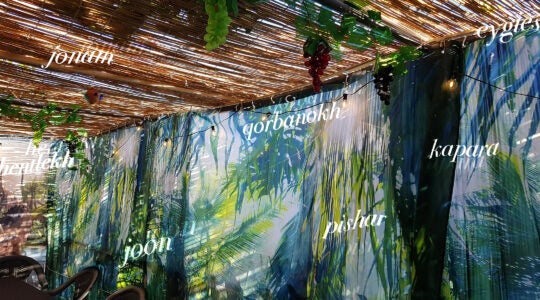Kudos to Shira Eliassian for introducing the topic of religious feminism in the Sephardic community – a topic seriously under addressed. (Like Shira, I use the word Sephardic to refer to a religious tradition and not an ethnicity, although it it strongly overlaps with the Jewish communities from the Islamic world).
Shira writes how challenges facing Sephardi feminists are not addressed. For example, Sephardi women may be less able to participate in partnership minyanim due to piske halacha which view women’s obligations differently. But this formulation of the issue does not take into account the much larger question of why a Sephardi feminist, with an affinity to Sephardic liturgy and minhag, is limited to praying in an Ashkenazi congregation. Why the scarcity of feminist-friendly prayer options in the Sephardi community?
Click here to read other pieces in the Sephardi Feminism Series!
Why the scarcity of feminist- friendly prayer options in the Sephardi community?
Contrary to the popular stereotype, it’s not because we Sephardim are a hopelessly primitive and chauvinistic society. In fact this ugly stereotype further marginalizes our practices as women; such as when Ashkenazi communities proudly reinvent the Simhat Bat, with no idea that we have been celebrating the Zeved HaBat/ Brita all along; or when our celebration of the bride’s mikvah immersion is demeaned as a nuisance and as immodest.
The communal response created a sense of community between the women, in contrast to the islands of meditative solitude in the ezrat nashim of other synagogues.
My first experience attending Sephardic minyanim a quarter of a century ago was in a right wing, reactionary, non-feminist environment. The women were in a dimly lit room adjoining the main (men’s) section and yet I was struck by how they seemed so much more present than in the Ashkenazi congregations I had been used to. (I add that this is only my own experience, and surely does not reflect the vast diversity of Ashkenazi and Sephardi congregations everywhere!) It wasn’t so much as how the Torah was carried to the women’s section, although that certainly played a role, but by more subtle, spontaneous behaviors. For example, the women fervently responded to the chazzan (cantor) out loud, in contrast to the silent whispers to which I had been accustomed. They felt comfortable enough to call names out loud for the prayer for the sick. The communal response created a sense of community between the women, in contrast to the islands of meditative solitude in the ezrat nashim of other synagogues. When the selihot season came around, there were always women present- 40 days straight.
Traditionalism is characterized more strongly by its loyalty to tradition than by strict adherence to the letter of halacha.
Clearly then, there is room in Sephardi culture for female spiritual expression. Why then the low interest in establishing halachic services offering a greater role for women? I suggest that ironically, it is precisely the halachic orientation that fails to draw many modern Sephardim to the cause. In Israel, Sephardim most often identify as “traditional,” and I suspect the same is true in the US, including those Sephardim who are simultaneously members of the Orthodox world. Traditionalism is characterized more strongly by its loyalty to tradition than by strict adherence to the letter of halacha. Thus, a woman taking on masculine-identified roles jars many traditionalists’ notions of continuity, no matter what the halachic rationale. It goes without saying that we must appreciate both approaches to Judaism as legitimate and worthy of respect.
So what’s a Sephardi Feminist to do?
It is worth noting that as a practice becomes more and more mainstream in the observant Ashkenazi world, it may become acceptable to Sephardim as well. After all, we do not inhabit two separate planets; and we freely borrow from each other. For better or for worse, Sephardim have adopted many Ashkenazi practices such as Purim disguises, without feeling as if they are betraying tradition. In addition, many Ashkenazi congregations are open to including a Sephardi piyout or melody on occasion and would surely appreciate your contribution (for example, think of “Et Shaare Rasson” which is recited on Rosh Hashana). Your participation in an Ashkenazi congregation may help pave the way for it to happen in your Sephardic community.
Aliza Lavie, Knesset member and author of Minhage Nashim and Tefillat Nashim, has stated that she had never heard of her own family’s Zeved HaBat tradition until well into adulthood.
Secondly, it is crucial to stand up for endangered traditions within your own family and community. Aliza Lavie, Knesset member and author of Minhage Nashim and Tefillat Nashim, has stated that she had never heard of her own family’s Zeved HaBat tradition until well into adulthood. Note also subtle behaviors of the type mentioned above; and observe generational differences; as many young women, educated in Ashkenazi-dominant environments, are exposed to different models of behavior.
Lastly, don’t be shy about your own vision of a feminist friendly Sephardic congregation. Don’t be afraid to voice your opinion. That is the only way to find like-hearted folks and turn your vision into reality.
Sara Maimon is of mixed Turkish-Sephardic and Galicianer-Hasidic background. She is pursuing her MA in Jewish History and Jews of the Islamic world. She participates in the Sephardic Egalitarian Kehilat Degel Yehuda.
To read other pieces in the Sephardi Feminism Series, click here.
Posts are contributed by third parties. The opinions and facts in them are presented solely by the authors and JOFA assumes no responsibility for them.
If you’re interested in writing for JOFA’s blog contact shira@jofa.org. For more about JOFA like us on Facebook or visit our website.
The New York Jewish Week brings you the stories behind the headlines, keeping you connected to Jewish life in New York. Help sustain the reporting you trust by donating today.




